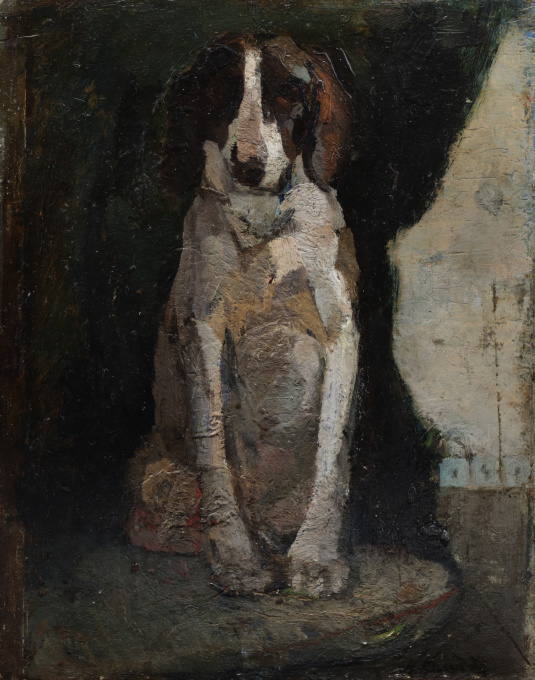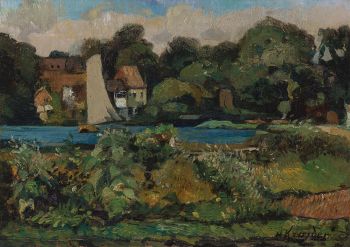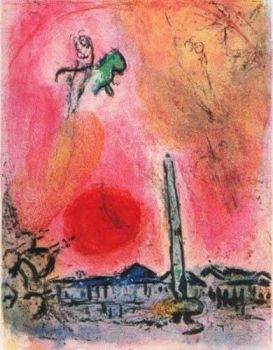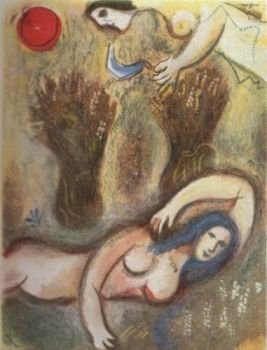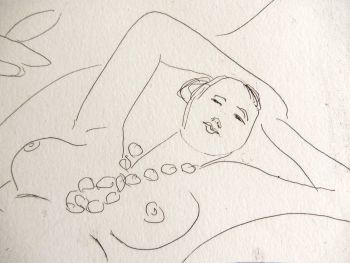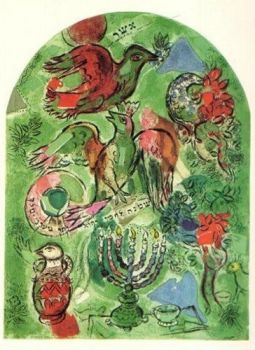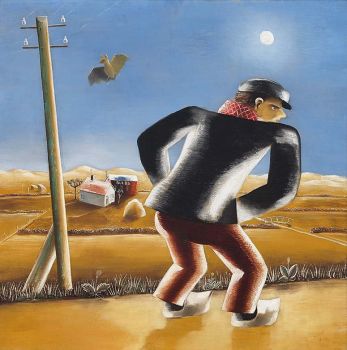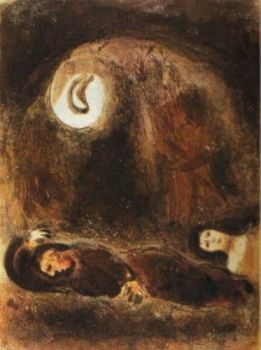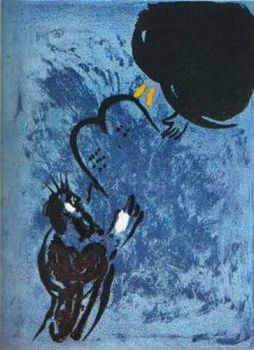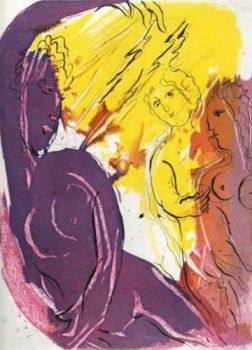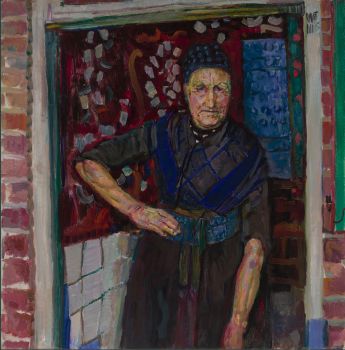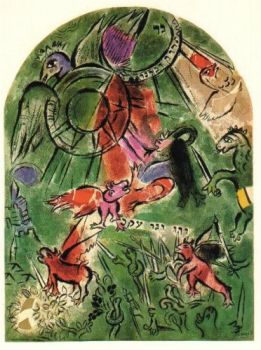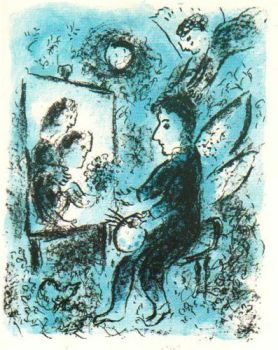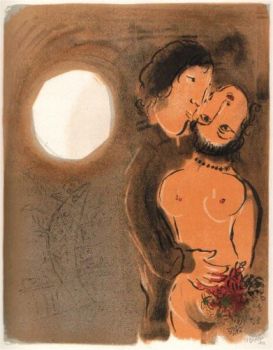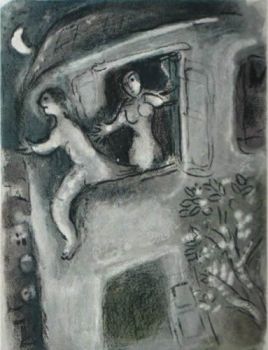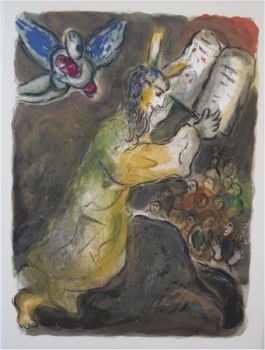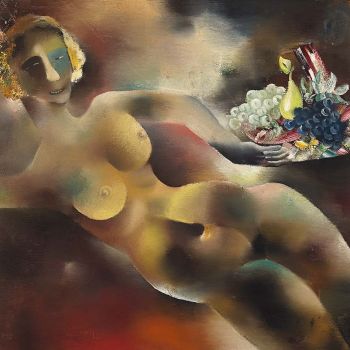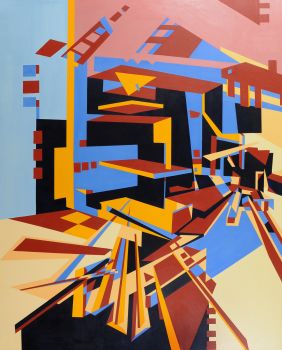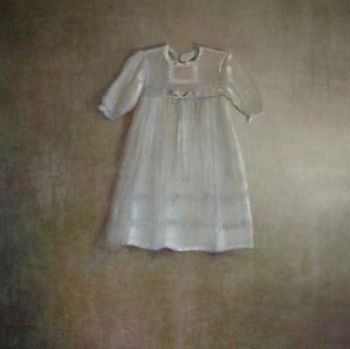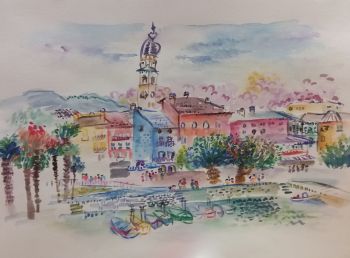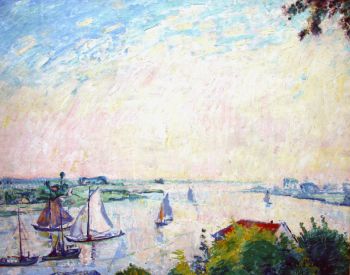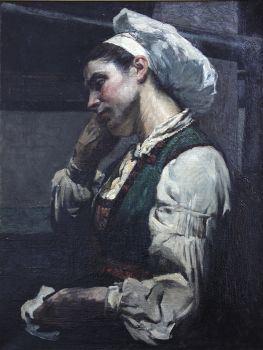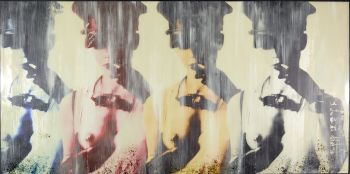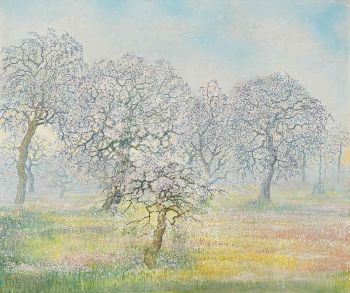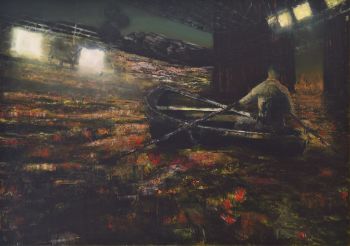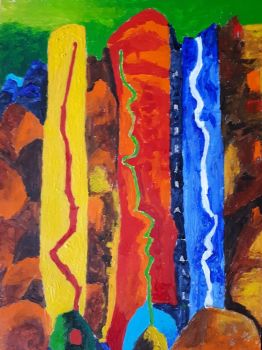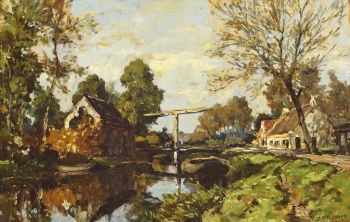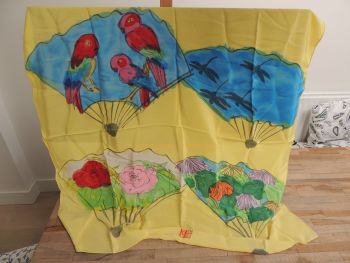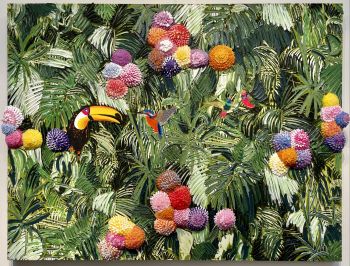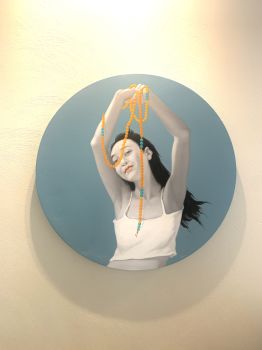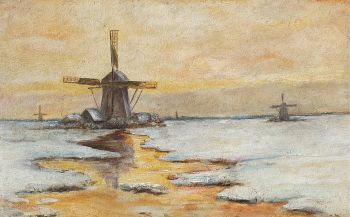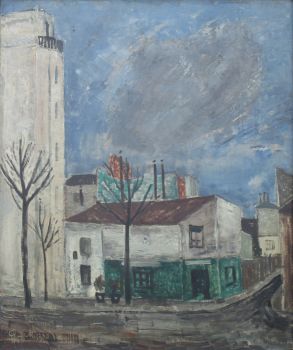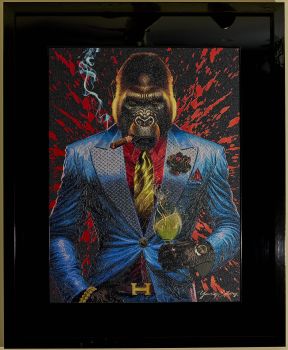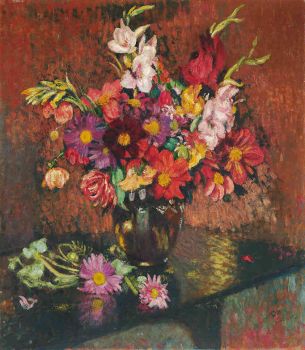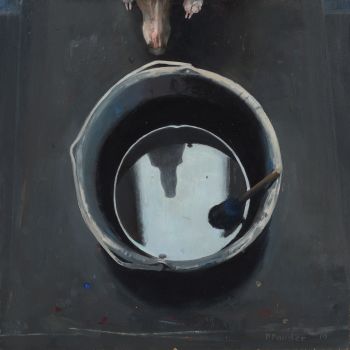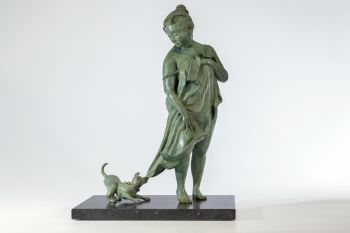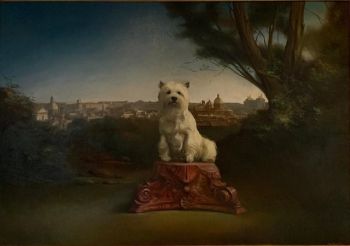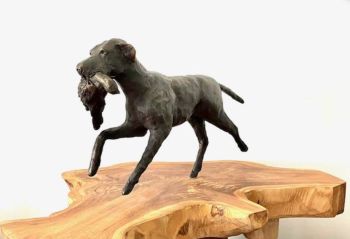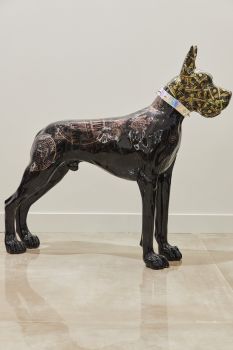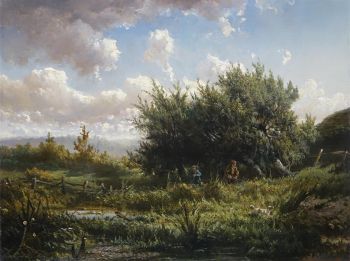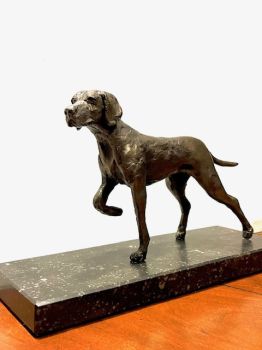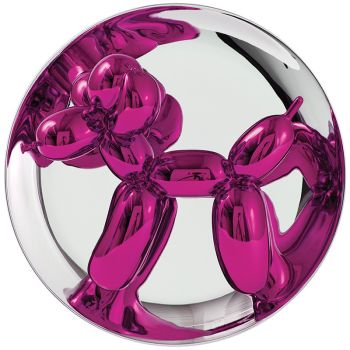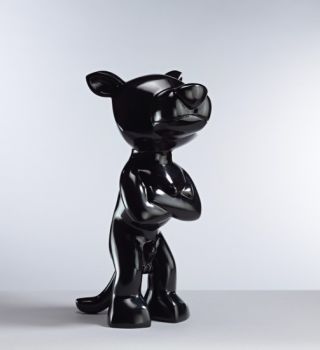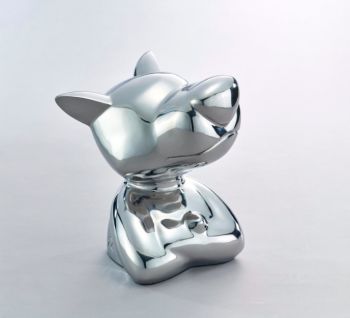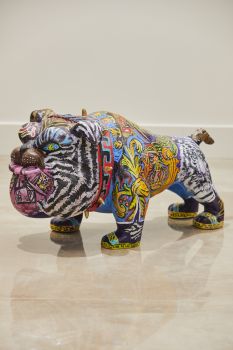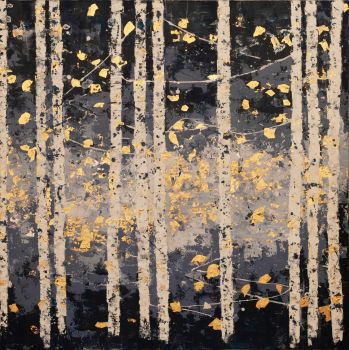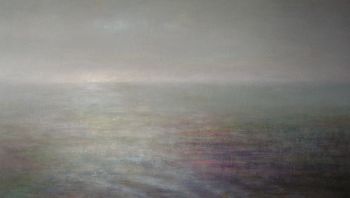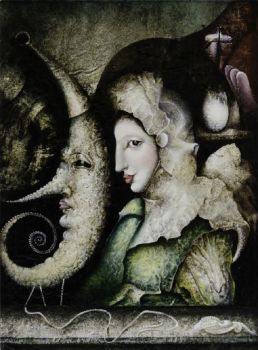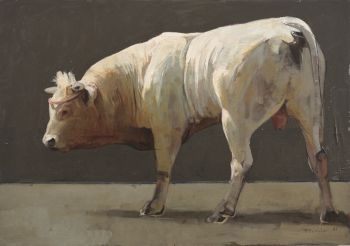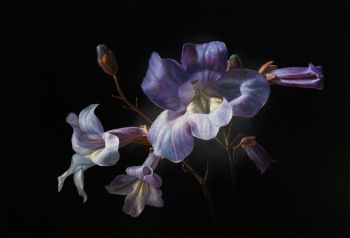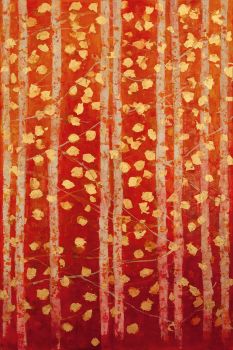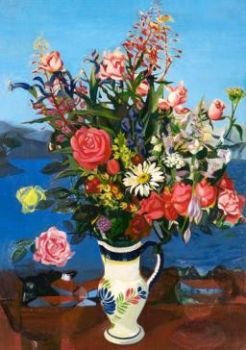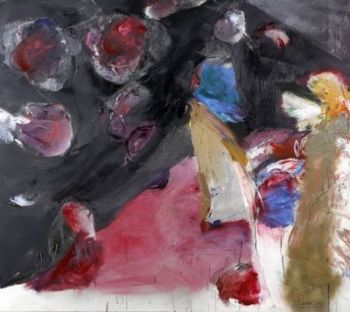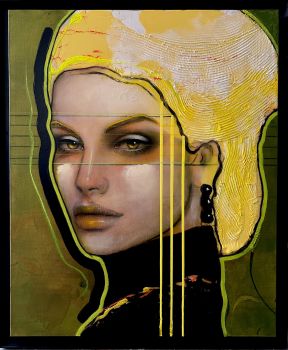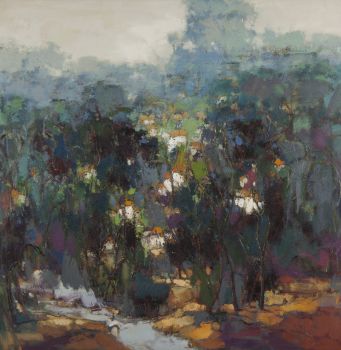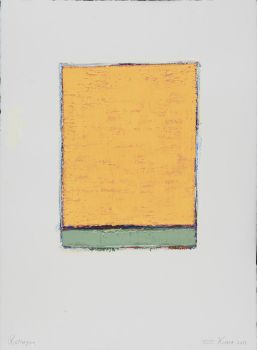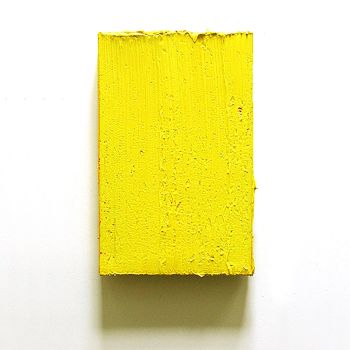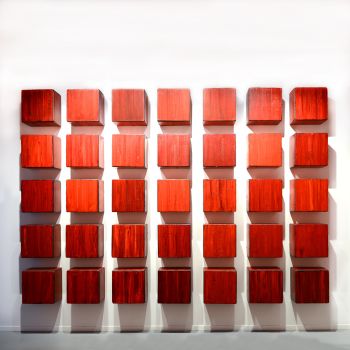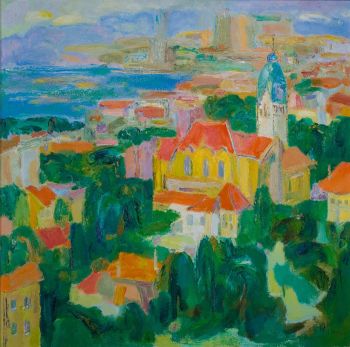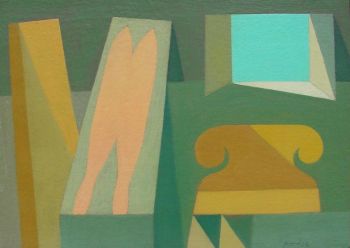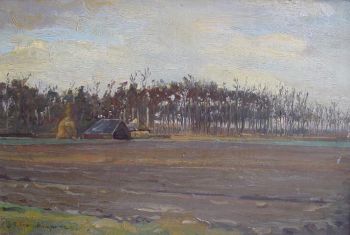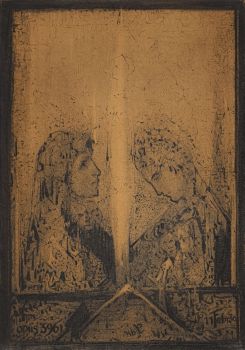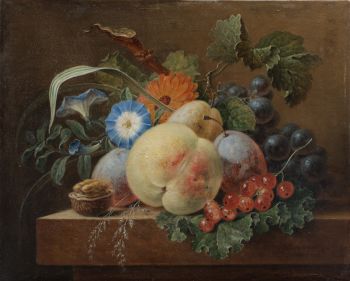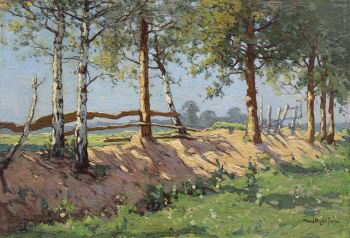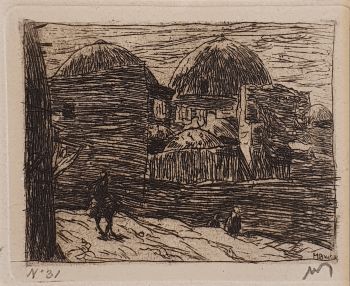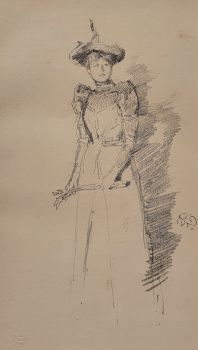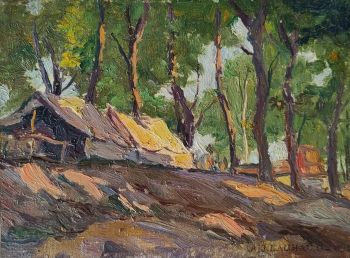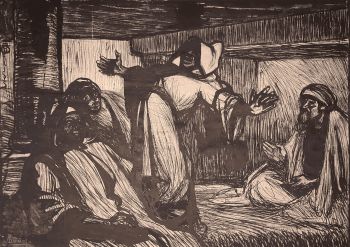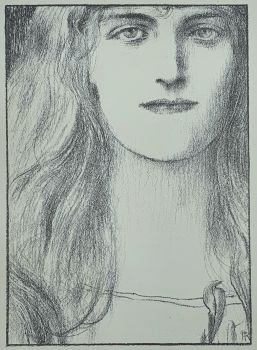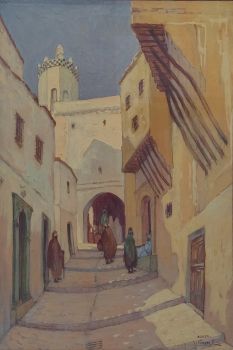Sitting dog – Zittende hond 1910 - 1915
Herman Kruyder
WoodBoardOil paintPaint
32 ⨯ 25 cm
ConditionExcellent
€ 2.800
Klooster Fine Art
- About the artwork[EN]
This dog was painted by Herman Kruyder around 1913. By that time, he had been a full-time artist for about three years. In line with most of his artistic output, this painting takes its influence from the natural world. During his early career, he also painted several still-lifes, and on the verso of this board he started working on a small scale still-life, which he never finished beyond a basic sketch.
Kruyder worked in a very distinct style that changed all through his career. This dog is built up out of layers of sometimes unexpected colours, visually blending together in the final picture, displaying his well-developed sense of colour. Some 20 years after this charming portrait of a dog, he painted the much more troubled The dog, now in Museum Boijmans Van Beuningen.
[NL]
Deze hond werd geschilderd door Herman Kruyder rond 1913. Tegen die tijd had hij zich ongeveer drie jaar volledig aan de schilderkunst gewijd. Geheel in lijn met het grootste deel van zijn artistieke productie, haalt ook dit schilderij zijn invloed uit de natuurlijke wereld. In zijn vroege carrière schilderde hij ook diverse stillevens, en op de keerzijde van dit paneeltje is hij ook begonnen met een klein stilleven, dat ophoudt bij een eerste compositieschets.
Kruyder werkte in een heel onderscheidende eigen stijl, die gedurende zijn hele carrière doorontwikkelde en veranderde. Deze hond is opgebouwd uit lagen van soms onverwachte kleuren, die visueel mengen in de uiteindelijke afbeelding. Daarmee liet Kruyder zien dat hij een goed ontwikkeld gevoel voor kleur had. Ongeveer 20 jaar nadat hij dit innemende portret van een hond maakte, schilderde hij de getroubleerde De hond, nu in Museum Boijmans Van Beuningen. - About the artist
He was a Dutch painter. He was born in Baarn. According to the RKD he married the artist Jo Bouman and worked with Henri Boot in Haarlem around 1905. He was a member of Kunstkring Haarlem and Kunst zij ons doel.Later in 1930 he moved back to Het Gooi where he became a member of the Gooise Kunstkring.
The artist Herman Kruyder (1881-1935) was among the most important painters of his day. From 1916 he adopted a highly personal expressionist style with flat fields, heavy outlines and intense colours. Kruyder's pictures range from enchanting, idyllic scenes filled with an elation at the beauty of nature, to nightmarish scenes that reflect his own anxieties and mental depressions. Fifteen paintings and 35 watercolours were to be seen in the exhibition, from the large collection of the Frans Hals Museum De Hallen Haarlem. Among them were one painting and five watercolours purchased from the estate of Bella van Tussenbroek. These works had never before been exhibited.
Haarlem 1907-1919
After training as a stained glass artist at the Haarlem School for the Applied Arts (1900-1904) in 1907 Kruyder settled in Haarlem as an autonomous artist. He copied old masters in the Frans Hals Museum and was a member of various artists' associations. His encounter with the painter Henri Boot proved important. His effort to express ‘the essence of things’ had immense influence on Kruyder. In these years Kruyder painted impressionistic woods and pasture landscapes in the vicinity of Haarlem and Heemstede.
Beginning in 1916/17 the influence of new currents in painting, such as expressionism and Cubism, becomes visible. He developed an entirely personal expressionist style with flat fields, heavy contours and intense colours. According to a review in 1921, Kruyder had ‘won first place among the moderns’.
Heemstede and Bennebroek 1919-1926
In the main Herman Kruyder's life was spent in the tranquillity of rural villages such as Heemstede, Bennebroek and Blaricum. There he found his motifs: the village and its people, the animals, trees and flowers. In the course of the 1920s the character of his work changed greatly. The initially poetic scenes of people, animals and nature become increasingly oppressive. The artist's own anxieties and depressions come to be clearly felt in his work.
Blaricum 1927-1934
In 1927 Kruyder settled in the artists' village of Blaricum. There he had considerable contact with the painter Leo Gestel and the art collector P.A. Regnault, who regularly purchased work by Kruyder beginning in 1929. At the end of the 1920s his way of working becomes increasingly realistic, sometimes almost naïve, reminding one of the famous French artist Henri Rousseau. However, the alarming character of the work does not disappear. For example, in this period he painted a series of large animals, their ponderous and deformed shapes exuding an atmosphere of dark passions. These intense, often incomprehensible images make Kruyder's work extremely personal. They are images that leave a lasting impression on one.
He died in Amsterdam in 1935
Are you interested in buying this artwork?
Artwork details
Related artworks
- 1 - 2 / 2
Marc Chagall
Booz se reveille et voit Ruth a ses Pieds1952 - 1980
Price on requestArthouse Marc Chagall
1 - 4 / 24Egbert Rubertus Derk Schaap
GEZICHT OP KORTENHOEF1862 - 1939
Price on requestGalerie Het Noorderlicht
1 - 4 / 24- 1 - 4 / 24
- 1 - 4 / 24
- 1 - 4 / 12

